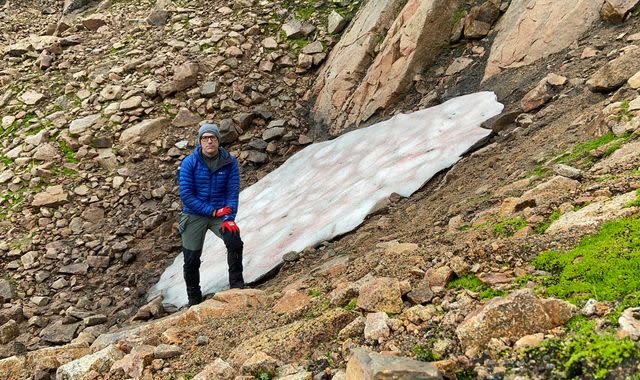Dwindling snow patches on Scottish hills are 'very visible record' of climate change

The number of snow patches across a huge swathe of Scotland still surviving this summer has fallen to 90 - the third lowest on records going back 50 years.
It is far lower than the highs of more than 2,000 recorded in the 1970s and 1980s.
The two lowest years have also fallen this century, with just 31 in 2003 and 53 in 2017.
Iain Cameron, who now leads the survey, said: "It tells you very much that there's less snow than there used to be. There's no doubt about that."
He added: "I'm not shocked by it, unfortunately. The trajectory of the last few years is just [too little] snow".
The survey covers the Cairngorms and surrounding hills, but not the Ben Nevis area - everything east of the major A9 road that runs from north to south.
Any surviving patch of snow is included, whether one or one hundred metres long.
The survey has been carried out on or close to 1 July every year since 1974. These days, by the end of September, all the snow tends to melt.
"I think all snow is going to disappear again completely this year, for the third year in a row," said Mr Cameron.
"That would have been absolutely unthinkable even a couple of decades ago."
He classes himself a citizen scientist, though his findings are published each year by the Royal Meteorological Society.
Its chief executive Prof Liz Bentley said: "Snow patches are an important indicator of climate change and the annual records highlight the variability in our climate from year to year as well as the long-term changes."
Read more:
Hurricane Beryl heads towards Cancun as Royal Navy sends aid ship
Why Google's greenhouse gas emissions have surged
The changes are similar to those seen in the melt or disappearance of other glaciers, she said.
"As our climate continues to warm, we will continue to see this trend in the reduction of snow patches being logged.
She added: "Eventually they will vanish [in summer] completely."
Mr Cameron says anyone who wants to get involved can help by volunteering to take part, or make donations to the team to cover the cost of things like fuel and outdoors equipment.
"These little things act as a barometer for what the wider climate is doing, I think... We just do it because we just love being outside, and we love to see these patches of snow persisting on the hills for some reason that's difficult to describe."
Stephan Harrison, professor of climate and environmental change at Exeter University, said the snow patches are also influenced by factors like wind and cloud cover as well as temperatures.
But they are still a "very visible record" of the "impact that human activities are having on the climate", he said.
"It essentially supports what we already know: that the Earth is warming."
He added: "It'd be sad if they didn't exist... that we as humans have changed the climate and the atmosphere to the extent that these things now don't exist."


